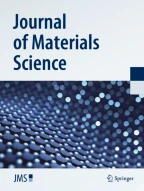Abstract
Explosive bonding between iron and copper plates was achieved under various conditions. A variety of experimental techniques were applied in order to investigate the bonding interface, including metallography, scanning electron microscopy, X-ray micro-analysis and X-ray diffraction. It was found that the bonding characteristics depend on the ratio of the explosive weight to the flyer plate weight (R ratio) and on the distance (X) from the detonation point. The microstructure of the molten pockets obtained depends strongly on their composition and on the cooling rate. Increasing the copper content in the molten pocket and the cooling rate resulted in a finer structure. Microstructural similarities between electron-beam molten surfaces and molten pockets in explosively bonded plates indicate, that cooling rates as high as 105 K sec−1 are obtained in both cases.
Similar content being viewed by others
Explore related subjects
Discover the latest articles, news and stories from top researchers in related subjects.References
B. Crossland andJ. D. Williams,Met. Rev. 15 (1970) 79.
B. Crossland,Met. Mater. 5 (1971) 401.
A. S. Bahrani, T. J. Black andB. Crossland,Proc. Roy. Soc. A 296 (1967) 123.
W. Lucas,J. Inst. Metals 99 (1971) 335.
S. Kou, S. C. Hsu andR. Mehrabian,Met. Trans. 12B (1981) 33.
R. Mehrabian,Int. Metals Rev. 27 (1982) 185.
Y. Chuang, R. Schmid andY. A. Chang,Met. Trans 12A (1984) 1921.
Z. Livne, “Structure phenomena in the bond zone of explosively bonded plates”, Nuclear Research Center-Negev, NRCN 464 (1979).
L. F. Trueb,Trans. Met. Soc. AIME 242 (1968) 1057.
Author information
Authors and Affiliations
Rights and permissions
About this article
Cite this article
Livne, Z., Munitz, A. Characterization of explosively bonded iron and copper plates. J Mater Sci 22, 1495–1500 (1987). https://doi.org/10.1007/BF01233153
Received:
Accepted:
Issue Date:
DOI: https://doi.org/10.1007/BF01233153
